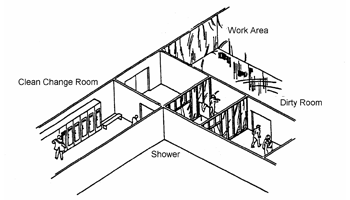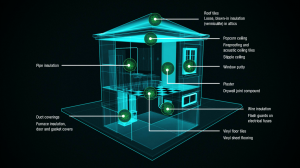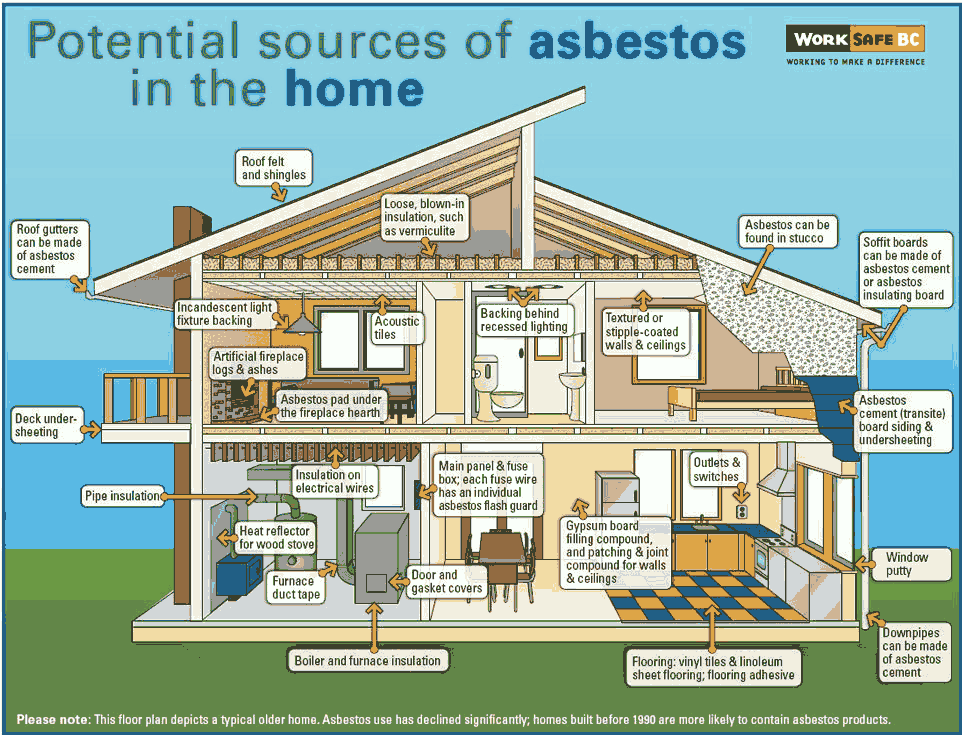The 5-Second Trick For Asbestos Testing Calgary
Table of ContentsNot known Incorrect Statements About Asbestos Testing Calgary Some Known Factual Statements About Asbestos Testing Calgary 9 Simple Techniques For Asbestos Testing Calgary5 Easy Facts About Asbestos Testing Calgary ExplainedAll About Asbestos Testing Calgary

In all Type 1 operations, the spread of dust from the workspace must be controlled by the usage of drop sheets of polyethylene or other appropriate material, or by other steps specified in area 14 of the Policy. Friable ACM that is not collapsed, pulverized or powdered and that may be disturbed or eliminated during the work needs to be thoroughly moistened before the work starts and must be kept damp throughout the work.
In Type 2 operations including the removal of all or part of an incorrect ceiling where ACM is most likely to be on the surface of the ceiling and the removal or disturbance of one square metre or less of friable ACM, the mechanical ventilation system serving the work location should be handicapped and all openings or spaces, consisting of ventilation ducts, should be sealed.
Not known Details About Asbestos Testing Calgary
Where appropriate, the spread of dust should be managed by measures suitable to the work, including using drop sheets or other suitable material made from material that is impervious to asbestos In the case of Type 2 operations including work above a false ceiling or work including the removal or disturbance of one square metre or less of friable ACM, the work location must also be surrounded by an enclosure made from polyethylene or other suitable product impervious to asbestos, where practicable.
Glove bags serve to manage asbestos dust and waste at the source by containing the wetted ACM throughout the elimination and by containing the waste. Surfaces listed below a glove bag operation should likewise be covered with a drop sheet. Source: Building And Construction Security Association of Ontario The Guideline requires that, prior to ACM is removed inside, the workspace need to be enclosed and a decontamination center established, as explained formerly.
The friable ACM should be completely moistened and kept wet throughout the removal, unless this would create a hazard or trigger damage. Dust and waste need to also be kept damp if Bonuses practicable. The Regulation requires that a skilled employee inspect the workspace at the start of each shift, at the end of each shift, unless the next shift begins instantly, and a minimum of once on days when there are no shifts.
The Basic Principles Of Asbestos Testing Calgary

The pressure distinction must be measured often and at routine intervals and the ventilation system used to preserve the negative air pressure need to be checked and preserved by a skilled employee prior to each use. Replacement air taken from outside the enclosed location must not be polluted with any hazardous dust, vapour, smoke fume, mist or gas.
If, throughout the course of the inspection, the filter is found to be damaged or malfunctioning, it needs to be changed before the ventilation system is used. The ventilation system that is used to preserve the enclosed area at unfavorable pressure must be examined and preserved frequently by a "qualified worker" prior to each use. In outdoor Type 3 operations explained in paragraphs 1, 2, 3, and 4 of subsection 12( 4) of the Policy, any ACM that is to be gotten rid of must be wetted, if practicable, and kept damp during the elimination. Dust and waste must not be permitted to fall from one level to another.
The Ultimate Guide To Asbestos Testing Calgary
Type 3 operations that are done on non-friable ACM utilizing power tools that are not connected to a dust-collector equipped with a HEPA filter need to be carried out in enclosures, unless the work area is confined by walls. If the enclosure is made from non-transparent material, several transparent windows must be contributed to the enclosure so that the whole workspace can be seen from outside the enclosure.

If the work is done outdoors or inside a building that will be destroyed, and that will just be entered by asbestos reduction and demolition workers, the upkeep of unfavorable atmospheric pressure is not needed. The usage of barriers, fences, enclosures and glove bags assists to manage asbestos direct exposure by separating employees from the source of asbestos dust and fibres. Asbestos Testing Calgary.
The 6-Minute Rule for Asbestos Testing Calgary
The requirement for clearance air screening at the end of indoor Type 3 operations involving the elimination of ACM that is described in paragraphs 1, 2, 3, 4, and 6 of subsection 12( 4) makes sure that employees who get in the area following the removal are not exposed to asbestos fibres. Type 1 operations need managing the spread of dust through appropriate measures including making use of drop sheets that are impervious to asbestos.